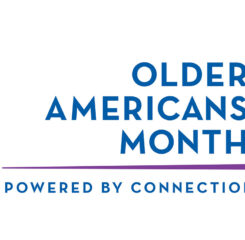Collaborative Care & Health IT Innovations Summit Highlights
Person-centered care, telehealth innovations, and the ways that technology can support an engaging lifestyle for older adults were center stage at the virtual Collaborative Care & Health IT Innovations Summit, held June 8-10, 2021.
LeadingAge, LeadingAge CAST, and their partners in the LTPAC Health IT Collaborative co-organized the summit, which was free to care providers. Access to the Summit’s recorded content, presentations, discussions, and resources is available for three months.
McKnight’s Senior Living covered the summit and has published three articles with summit highlights.
Person-Centered Care and Data
Senior living and care organizations need to focus on providing overall well-being for older adults, according to Peter Kress, a CAST Commissioner and senior vice president and chief information officer of Acts Retirement-Life Communities, a LeadingAge CAST Patron. Kress delivered a keynote, “Way Forward for Collaborative Care in Light of the Pandemic.”
A summary of Kress’s remarks, “Person-centered care, powered by data, is the future of collaborative care: speaker” noted that well-being includes lifestyle and social determinants of health and that the industry does not pay enough attention to these factors. “If the challenge of living and aging is about well-being,” said the article, “the solution is not based on the care setting.” Kress recommended senior living use person-centered approaches and collect enough data to engage older adults in a meaningful way.
Kress recommended that information technology teams move to a system of applications providing a data feed, which includes machine learning and artificial intelligence, the article said. He also noted that collaborative care does not rely enough on sensors, as only 5% of data come from sensors and the rest from personal reports.
Telehealth
“Telehealth may help to improve in-person physician visits, doc offers at tech summit” presented remarks from speakers at the session “Transition & Coordination of Care During Crises.”
The article noted that telehealth may be here to stay and may be used to enhance in-person health care visits in the future, according to Bill Russell, MD, chief medical informatics officer and managing partner of Conviva Care Centers. Russell said the analytics, data points, and visit transcriptions can make telehealth visits even more helpful than the current format of inpatient visits.
Interoperability and seamless data exchange among providers and patients are important, as is making data meaningful, David Icke, vice president of digital health and analytics product for Humana, and Aaron Miri, chief information officer at Dell Medical School and University of Texas Health Austin, reportedly said.
Medication list discrepancies are an ongoing challenge because they can affect hospital readmissions, according to Karen Marie Wilding, senior director of quality and value-based care at the University of Maryland Medical System, said the article.
Senior Living Tech to Support Full Lifestyle
“Senior living must adapt to technology’s new frontier: friends, fun and function” shares insights from Joe Coughlin, Ph.D., founder and director of MIT AgeLab at Massachusetts Institute of Technology. Coughlin presented the keynote “Pandemic As Propellant: How COVID-19 Made Technology The New Toilet Paper For Younger & Older Consumers.”
The article presented Coughlin’s perspective that “even before the pandemic, the senior living model — aging within four walls within a property line — was not as attractive as it once was” and that today’s older adults are seeking experiences. Yet technology can improve quality of life.
Coughlin reportedly said that MIT’s AgeLab is developing “an integrative device that envisions the home as a platform, not simply a place to live—monitoring, managing and motivating where someone is in his or her residence, how active he or she is and whether he or she is performing certain activities.”
The pandemic sped up technology “at least five to seven years faster than planned,” according to Coughlin. It also changed attitudes about technology, particularly among older adults, said the article.

Most Recommended
April 22, 2024
CMS Finalizes Nursing Home Minimum Staffing Standards
April 21, 2024
 Older Americans Month 2024: Suggested Schedule
Older Americans Month 2024: Suggested Schedule
April 24, 2024
 Salary Threshold for White Collar Overtime Exemptions Raised
Salary Threshold for White Collar Overtime Exemptions Raised
April 12, 2024
Improving Medicare Advantage
Recently Added
April 30, 2024
How Are Your Communities Powered by Connection?
April 26, 2024



